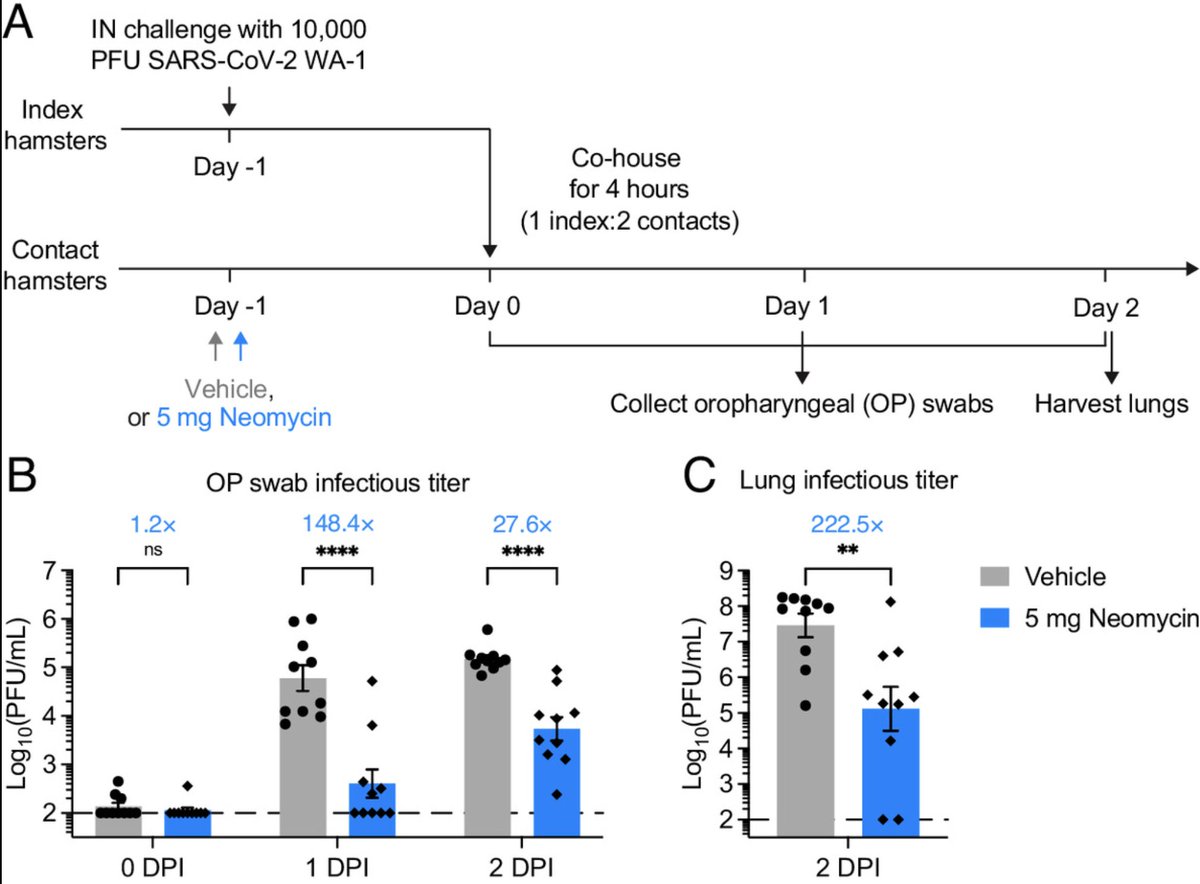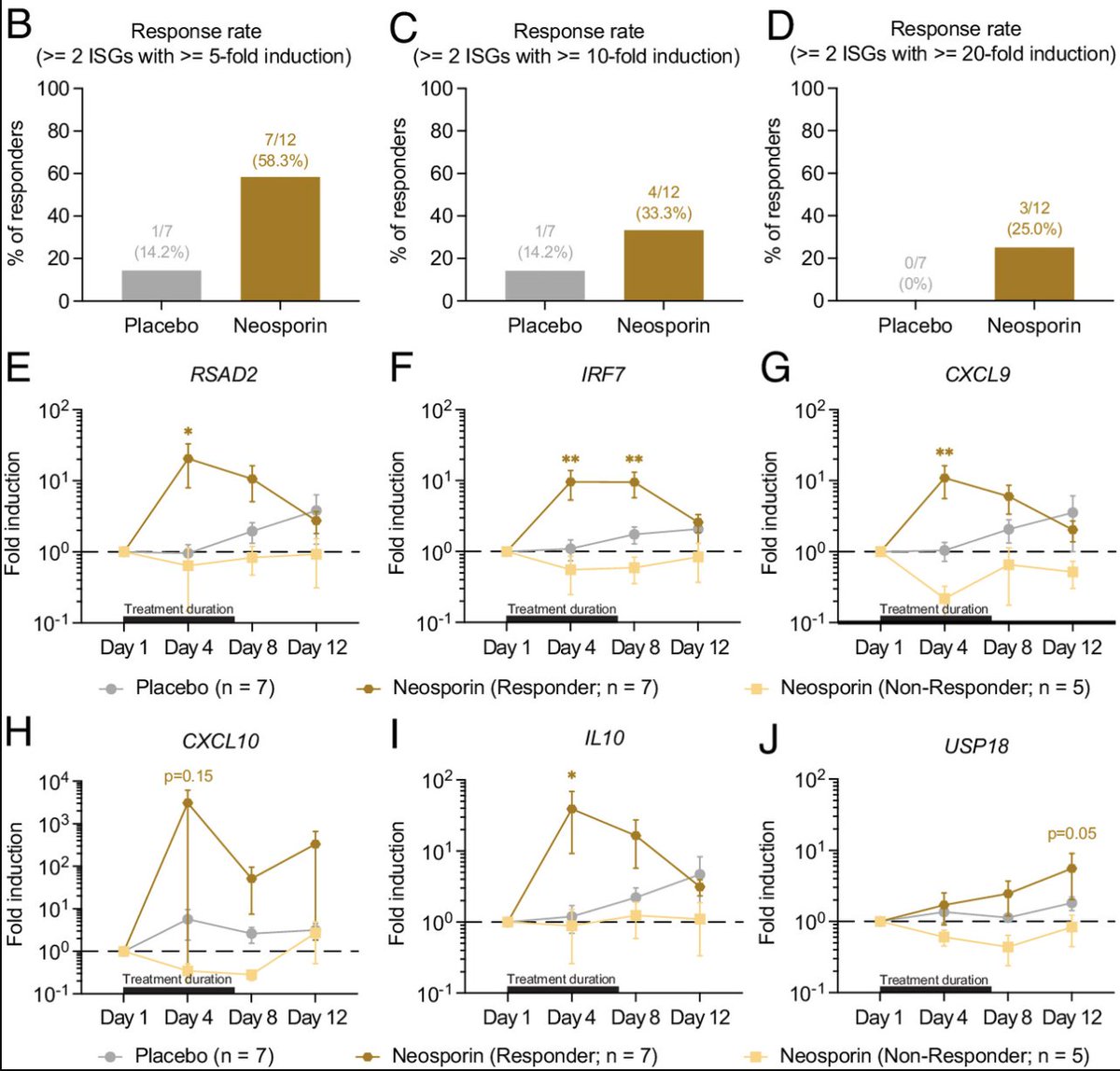Preventing infection is the best way to avoid diseases like #PAIS. A new study from our team @tianyangmao, Jooyoung Kim, @marioph13 et al shows that a generic antibiotic neomycin acts on the host immune system in the👃🏽to trigger antiviral resistance. (1/)🧵
pnas.org/doi/10.1073/pn…
pnas.org/doi/10.1073/pn…
This work is inspired by @SmitaGopinath et al who showed that an antibiotic class called aminoglycosides has an unusual antiviral property. Aminoglycosides including neomycin trigger interferon-stimulated genes through a TLR3-dependent mechanism. (2/)
ncbi.nlm.nih.gov/pmc/articles/P…
ncbi.nlm.nih.gov/pmc/articles/P…
In our current study, we showed that nasal application of neomycin in mice one day before infection reduces viral load and disease burden after the SARS-COV-2 challenge. @tianyangmao (3/) 

Intranasal application of neomycin also protected mice against highly virulent influenza virus infection. @MiyuMoriyama (4/) 

We could also treat mice already infected with SARS-CoV-2 with nasal application of neomycin 4 hours later, in a dose-dependent manner. This led to viral load reduction and increased survival. @tianyangmao (5/) 

What about transmission? Hamsters trx 1 day earlier with neomycin were protected from catching the virus from an infected hamster in the same cage. Even if they did, their viral load was ⬇️. Thus, neomycin applied in the nose can shield the host from COVID transmission. @marioph13 (6/)

OK, but does this work in humans? Collaborating with @CDelaCruzMed, we ran a small randomized, double-blind, placebo-controlled trial involving healthy human volunteers, who applied OTC Neosporin (containing neomycin) (n=12) or placebo (vaseline) (n=7) twice daily into their noses with cotton swabs. (7/)

More than half of the human volunteers who applied Neosporin into their noses showed robust antiviral gene expression (interferon-stimulated genes) measured by nasal brush, compared to placebo controls. We believe we can ⬆️ efficacy with higher neomycin doses. (8/) 

In a nutshell, we showed that over-the-counter cheap generic antibiotic neomycin can be repurposed in nasal formulation to prevent & treat infection, block transmission, and reduce disease burden against a wide array of viruses. Since this is a host-directed strategy and virus-agnostic, it holds promise as a prophylactic strategy against any viral threat. (10/)
Here are the amazing people who made this study possible, and we are grateful for all the human volunteers who participated in the pilot trial. We are grateful to the @gatesfoundation for the encouragement and support of this research 🙏🏽 (end) 

• • •
Missing some Tweet in this thread? You can try to
force a refresh













